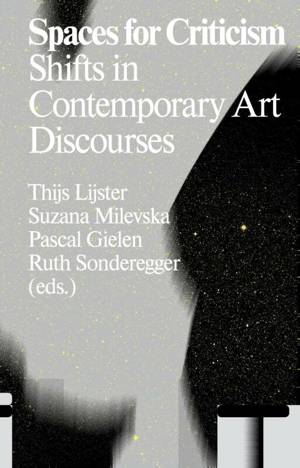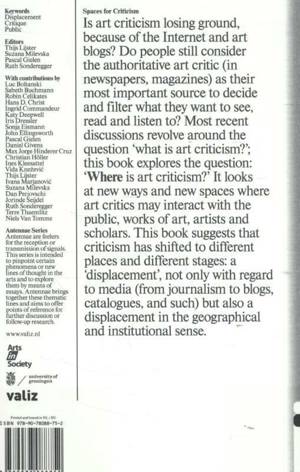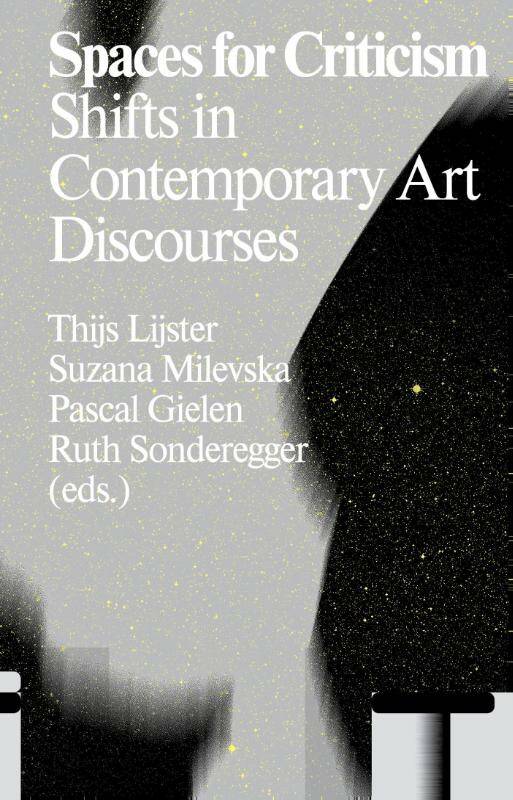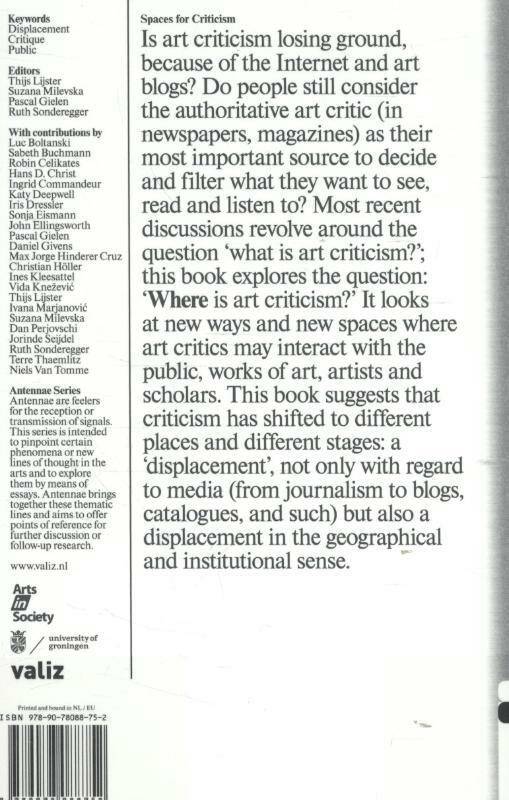
Door een staking bij bpost kan je online bestelling op dit moment iets langer onderweg zijn dan voorzien. Dringend iets nodig? Onze winkels ontvangen jou met open armen!
- Afhalen na 1 uur in een winkel met voorraad
- Gratis thuislevering in België vanaf € 30
- Ruim aanbod met 7 miljoen producten
Door een staking bij bpost kan je online bestelling op dit moment iets langer onderweg zijn dan voorzien. Dringend iets nodig? Onze winkels ontvangen jou met open armen!
- Afhalen na 1 uur in een winkel met voorraad
- Gratis thuislevering in België vanaf € 30
- Ruim aanbod met 7 miljoen producten
Zoeken


Omschrijving
Is art criticism losing ground to the Internet and its rapidly proliferating art blogs? Do people still consider the art critics employed by newspapers and magazines the most important arbitrators of what is worth seeing and reading? Much recent discussion about the changing landscape of art writing, often framed as a crisis in criticism, has revolved around the question, "what is art criticism?" Spaces for Criticism, edited by Pascal Gielen, asks instead, "where is art criticism?" The contributors to this volume explore new ways and new spaces where art critics might interact with works of art, artists, scholars and a varied, increasingly informed public. The authors argue that criticism has shifted to different places and different stages, experiencing both a displacement onto new media and into new geographic regions and new institutional structures.
Specificaties
Betrokkenen
- Auteur(s):
- Uitgeverij:
Inhoud
- Aantal bladzijden:
- 272
- Taal:
- Engels
- Reeks:
Eigenschappen
- Productcode (EAN):
- 9789078088752
- Verschijningsdatum:
- 29/12/2015
- Uitvoering:
- Paperback
- Formaat:
- Trade paperback (VS)
- Afmetingen:
- 135 mm x 208 mm
- Gewicht:
- 408 g

Alleen bij Standaard Boekhandel
+ 45 punten op je klantenkaart van Standaard Boekhandel
Beoordelingen
We publiceren alleen reviews die voldoen aan de voorwaarden voor reviews. Bekijk onze voorwaarden voor reviews.












